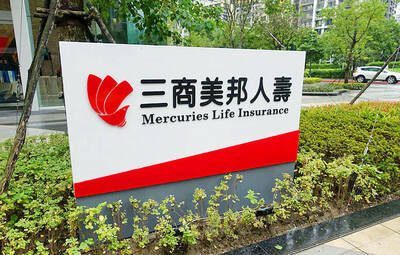US employers hired the fewest number of workers in almost three years last month, but the setback was likely to be temporary amid signs that unusually cold weather may have had an impact.
The surprisingly weak job growth figures reported by the US Labor Department on Friday complicated the picture for the US Federal Reserve, which last month announced plans to scale back its massive monetary stimulus program.
Non-farm payrolls rose only 74,000 last month, the smallest increase since January 2011 and well short of the about 200,000 jobs that most economists had expected.
The unemployment rate fell 0.3 percentage point to 6.7 percent, its lowest level since October 2008, but the decline mostly reflected people leaving the labor force.
“If there ever there was a curveball, this was it,” said Marcus Bullus, trading director at MB Capital in London. “These limp numbers are as puzzling as they are surprising.”
US stocks rose at the start of trading, as investors appeared to discount the data as being distorted by weather, but later slumped into negative territory. Prices for US Treasury debt rose and the US dollar slid as some traders scaled back bets on how quickly the Fed might close the monetary spigots.
The step back in hiring is at odds with other employment indicators, which have painted an upbeat picture of the jobs market. Tempering the blow, the US government’s survey of employers found that 38,000 more jobs were added in November than previously reported.
Construction employment fell last month for the first time since May and leisure and hospitality payrolls rose only marginally, suggesting that extremely cold weather in some parts of the country had held back hiring. In addition, transportation payrolls recorded their first decline in five months.
The smaller survey of households from which the jobless rate is derived showed 273,000 people stayed at home because of the bad weather, the most since 1977.
The impact on the payrolls data should have been muted as anyone who worked at all during the pay period that included the 12th day of the month would have been counted as employed.
The department said severe weather is more likely to impact hours worked than employment, and there was a decline in the length of the average workweek.
Economists polled by Reuters had expected job gains of 196,000 jobs last month, but many pushed up their forecasts in the wake of upbeat labor market data during the week.
“Given the disappointing jobs report flies in the face of nearly every other labor market metric of late, all which point to a strengthening trend, we would put most of the surprise down to bad weather rather than a bad economy,” said Jennifer Lee, a senior economist at BMO Capital Markets in Toronto.
The report offered a cautionary note after a string of data — from consumer spending and trade to industrial production — that had suggested the economy ended last year on strong footing and was positioned to strengthen further this year.
GDP growth this year is expected to top 3 percent, a sharp acceleration from the 1.7 percent forecast for last year.
In a sign of growing confidence in the economy’s prospects, the Fed announced last month that it would trim its monthly bond purchases to US$75 billion from US$85 billion starting this month, and many economists expect it to decide on a similar-sized cut at its next meeting on Jan. 28 and Jan. 29.
While some said the jobs data could lead the Fed to set aside plans to further curtail its stimulus, many said the central bank was unlikely to be swayed by the figures.

France cannot afford to ignore the third credit-rating reduction in less than a year, French Minister of Finance Roland Lescure said. “Three agencies have downgraded us and we can’t ignore this cloud,” he told Franceinfo on Saturday, speaking just hours after S&P lowered his country’s credit rating to “A+” from “AA-” in an unscheduled move. “Fundamentally, it’s an additional cloud to a weather forecast that was already pretty gray. It’s a call for lucidity and responsibility,” he said, adding that this is “a call to be serious.” The credit assessor’s move means France has lost its double-A rating at two of the

AI BOOST: Although Taiwan’s reliance on Chinese rare earth elements is limited, it could face indirect impacts from supply issues and price volatility, an economist said DBS Bank Ltd (星展銀行) has sharply raised its forecast for Taiwan’s economic growth this year to 5.6 percent, citing stronger-than-expected exports and investment linked to artificial intelligence (AI), as it said that the current momentum could peak soon. The acceleration of the global AI race has fueled a surge in Taiwan’s AI-related capital spending and exports of information and communications technology (ICT) products, which have been key drivers of growth this year. “We have revised our GDP forecast for Taiwan upward to 5.6 percent from 4 percent, an upgrade that mainly reflects stronger-than-expected AI-related exports and investment in the third

Mercuries Life Insurance Co (三商美邦人壽) shares surged to a seven-month high this week after local media reported that E.Sun Financial Holding Co (玉山金控) had outbid CTBC Financial Holding Co (中信金控) in the financially strained insurer’s ongoing sale process. Shares of the mid-sized life insurer climbed 5.8 percent this week to NT$6.72, extending a nearly 18 percent rally over the past month, as investors bet on the likelihood of an impending takeover. The final round of bidding closed on Thursday, marking a critical step in the 32-year-old insurer’s search for a buyer after years of struggling to meet capital adequacy requirements. Local media reports

RARE EARTHS: The call between the US Treasury Secretary and his Chinese counterpart came as Washington sought to rally G7 partners in response to China’s export controls China and the US on Saturday agreed to conduct another round of trade negotiations in the coming week, as the world’s two biggest economies seek to avoid another damaging tit-for-tat tariff battle. Beijing last week announced sweeping controls on the critical rare earths industry, prompting US President Donald Trump to threaten 100 percent tariffs on imports from China in retaliation. Trump had also threatened to cancel his expected meeting with Chinese President Xi Jinping (習近平) in South Korea later this month on the sidelines of the APEC summit. In the latest indication of efforts to resolve their dispute, Chinese state media reported that